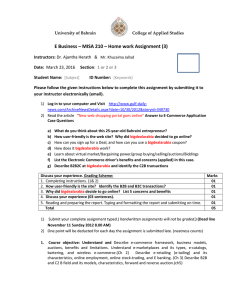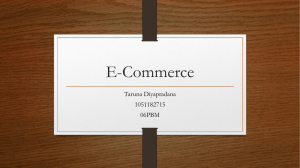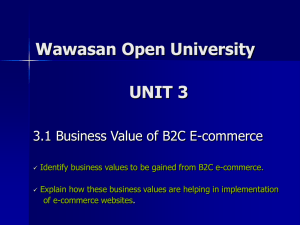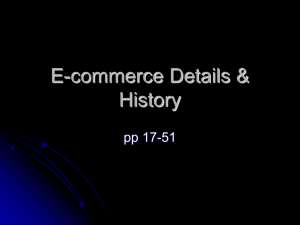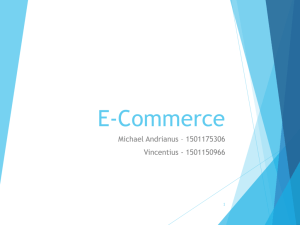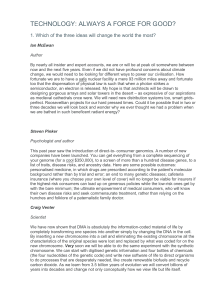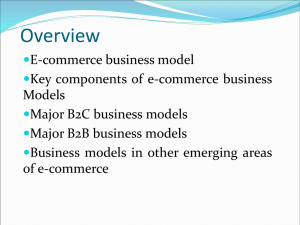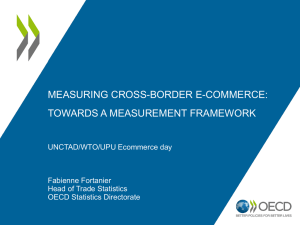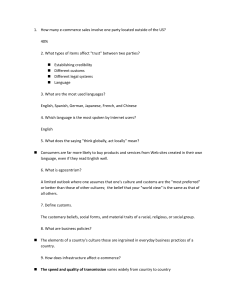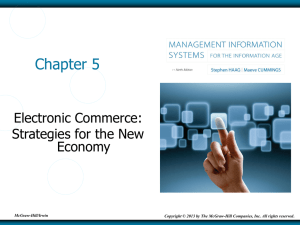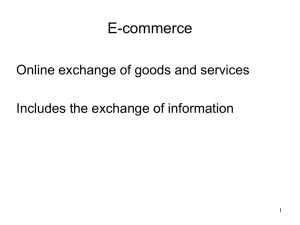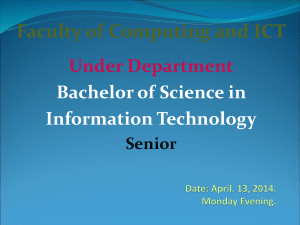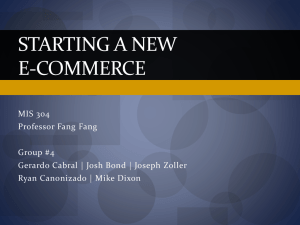COMMISSION ON HIGHER EDUCATION
advertisement
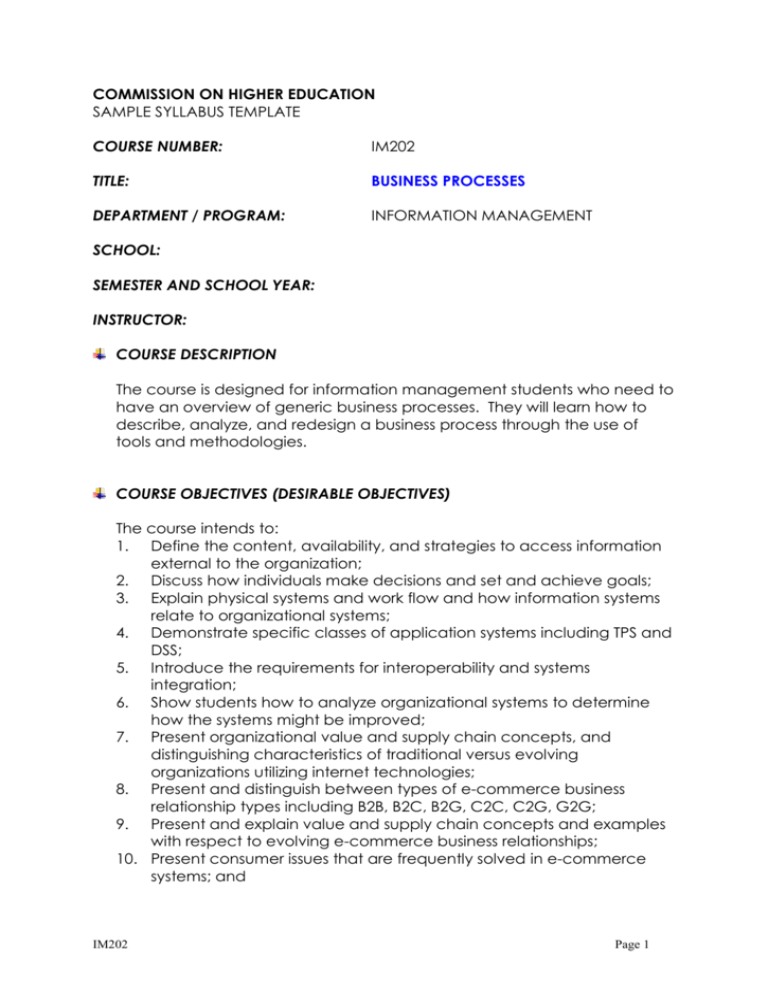
COMMISSION ON HIGHER EDUCATION SAMPLE SYLLABUS TEMPLATE COURSE NUMBER: IM202 TITLE: BUSINESS PROCESSES DEPARTMENT / PROGRAM: INFORMATION MANAGEMENT SCHOOL: SEMESTER AND SCHOOL YEAR: INSTRUCTOR: COURSE DESCRIPTION The course is designed for information management students who need to have an overview of generic business processes. They will learn how to describe, analyze, and redesign a business process through the use of tools and methodologies. COURSE OBJECTIVES (DESIRABLE OBJECTIVES) The course intends to: 1. Define the content, availability, and strategies to access information external to the organization; 2. Discuss how individuals make decisions and set and achieve goals; 3. Explain physical systems and work flow and how information systems relate to organizational systems; 4. Demonstrate specific classes of application systems including TPS and DSS; 5. Introduce the requirements for interoperability and systems integration; 6. Show students how to analyze organizational systems to determine how the systems might be improved; 7. Present organizational value and supply chain concepts, and distinguishing characteristics of traditional versus evolving organizations utilizing internet technologies; 8. Present and distinguish between types of e-commerce business relationship types including B2B, B2C, B2G, C2C, C2G, G2G; 9. Present and explain value and supply chain concepts and examples with respect to evolving e-commerce business relationships; 10. Present consumer issues that are frequently solved in e-commerce systems; and IM202 Page 1 11. Present concepts and specific examples of e-commerce functionality found in common business relationships COURSE OUTLINE AND TIMEFRAME 1. 2. 3. 4. 5. 6. 7. 8. 9. TOPICS AND READINGS Rationalization for Business Processes/ Business Drivers a. Streamlining business processes. b. Flattening organizational hierarchies. c. Introducing complex technologies at a rapid rate. Business Cycles a. Revenue Cycle b. Expenditure Cycle c. Conversion Cycle d. Treasury Cycle Transaction Systems (ERP, SCM) Financial Management a. Accounts Receivable b. Accounts Payable c. General Ledger d. Fixed Assets e. Cash Management Distribution and Logistics a. Procurement Management b. Sales Order Management c. Inventory Management Manufacturing Systems a. Product Data Management b. Shop Floor Management c. Quality Management d. Advanced Planning Management e. Cost Accounting Management Collaboration and Integration a. B2B b. B2E c. B2C d. B2G e. E-commerce options and issues CRM a. Demand Chain Management b. Service, Support, Warranty Management c. Contact Center Management (Inbound/Outbound) SRM IM202 DATE Page 2 a. Product Life Cycle Management b. Collaborative Product Design c. Product Data Management d. Co-managed Inventory, Billing, Purchasing e. Supplier Compliance 10. Sample Business Process Applications (Oracle Apps, JD Edwards, PeopleSoft, SAP, Siebel, eNGAS REQUIRED READINGS SUGGESTED READINGS COURSE REQUIREMENTS CONSULTATION HOURS IM202 Page 3

